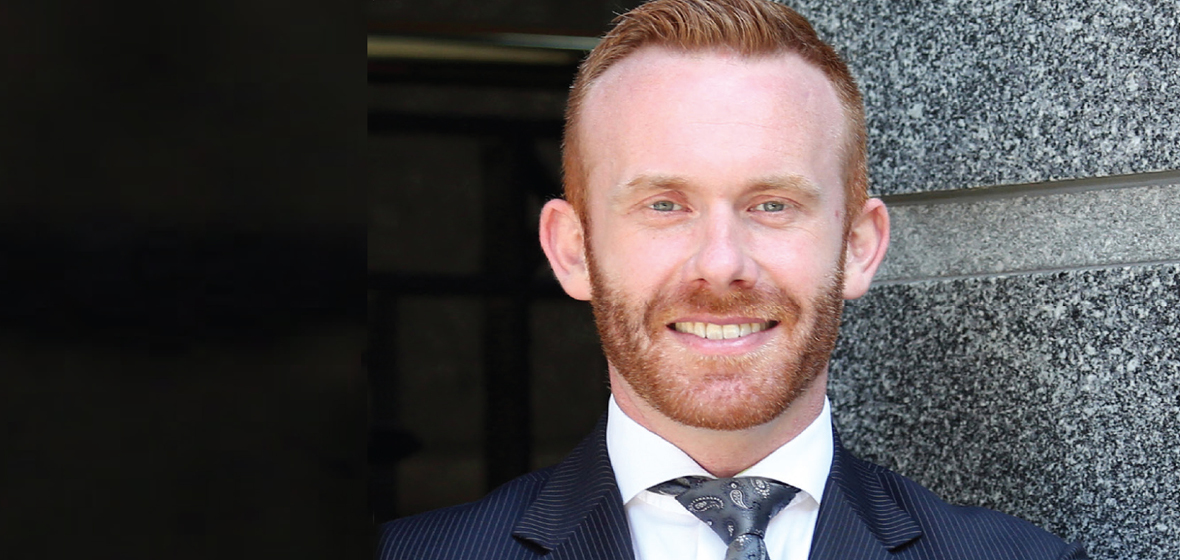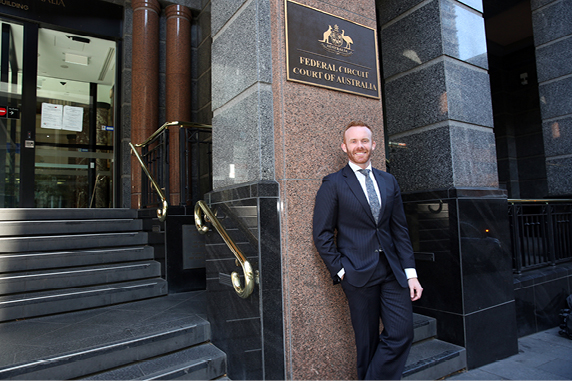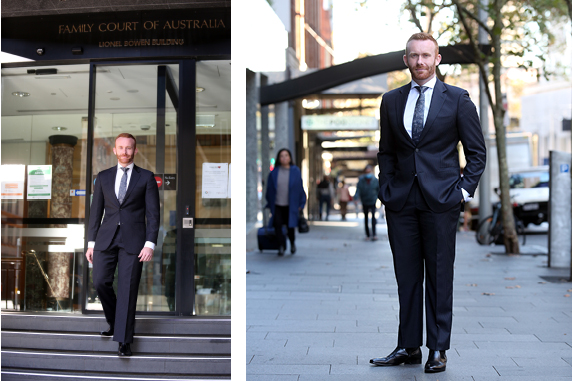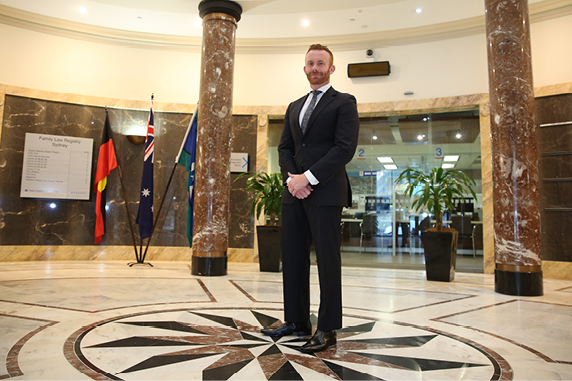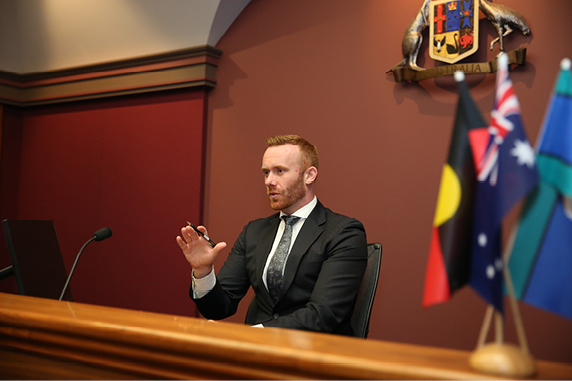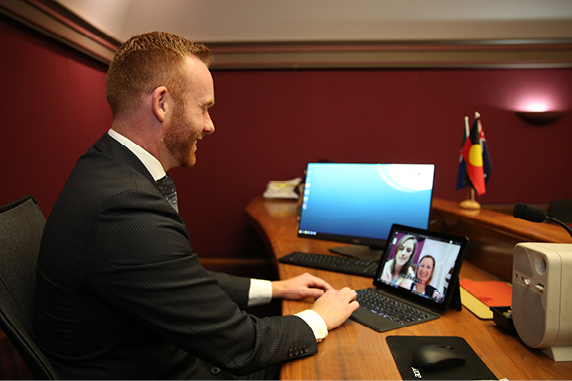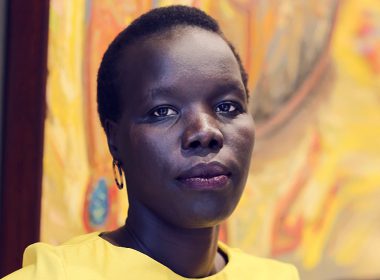Photography: Jason McCormack
The Lionel Bowen Building that houses the Family Court in Sydney is usually a hive of activity on weekdays.
Lawyers jostle through the brass doors, clerks in tow, hauling stacks of paper filings and notes. Long black robes billow behind their rapid-pacing advocates. And families exchange terse glances – perhaps even settlement options – as they meet on the steps of the court that could decide their futures.
But as I approach the court on a Wednesday in early May, at the height of NSW’s COVID-19 lockdown, its imposing grey brick walls cast uninterrupted shadows on an empty Goulburn Street. Not a single frantic, suited professional pounds this well-worn section of CBD pavement. The silence belies a flurry of work being carried out both inside the court building and in the makeshift home offices of legal professionals across the country.
“Yesterday I had 17 matters in my list. Today I have 12. The administration of justice absolutely carries on in a crisis,” Family Court National COVID-19 Registrar Brett McGrath tells me as he ushers me inside the building’s marble foyer.
The place is empty aside from two security guards and a cleaner. The latter is meticulously polishing brass bannisters to a mirror-like quality I have not seen in Sydney courts before.
I offer my hand and McGrath plants a giant blob of alcohol-based sanitiser into my palm – the new, socially distant handshake for physical visitors to the court complex.
“Don’t be fooled by the lack of people here,” he says. “Unlike other courts, some which have shut down, we don’t stop as a consequence of COVID-19. Family law is too critical.”
Sitting down for a lunch interview – the standard format for this section of LSJ – is off the cards today due to social distancing restrictions. So, we settle for a brief chat in the foyer, leaving two empty seats stretching 1.5 metres between us. It strikes me that, even if restaurants were open, McGrath’s workload would not be conducive to long lunches.
The Family Court of Australia has seen a 39 per cent increase in matters filed since the beginning of April. At the same time as new infections of COVID-19 in Australia were climbing by the hundreds every day, the nation’s family court registries were being inundated with parenting disputes. Supervised visitation centres suddenly closed under state-based lockdown regimes, and families who lived across state borders could not travel. Social distancing restrictions made it impossible for thousands of parents to comply with court-ordered parenting arrangements.
And while the Family Court has not yet gathered data on the increase in family violence matters amid the pandemic, McGrath says he and his colleagues have been preparing for an influx. The NSW Victims Services program in May reported a 10 per cent rise in the number of calls to front-line domestic violence services.
“Family violence groups spoke to the Chief Justice and warned of an increase in family violence matters relating to the lockdowns,” explains McGrath. “It was time that we realised we needed to have a dedicated COVID-19 list to respond to this heightened demand for family law services in the community.”
The CEO and Chief Justice of the Family Court of Australia decided to introduce a triage system for COVID-19-related matters. In April, the court appointed two National COVID-19 Registrars – McGrath, stationed in Sydney, and Registrar Elizabeth Matthews in Melbourne. Registrars, unlike judges, are lawyers who hold practising certificates and have delegated powers in the Family Court. They can conduct mentions and make orders where an agreement is reached between the parties, oversee conciliation conferences and property settlements, and list disputed matters that need to be seen by a judge. Critically, the registrar can offer opinions to assist the parties throughout a matter, which often encourages them to reach agreement more quickly.
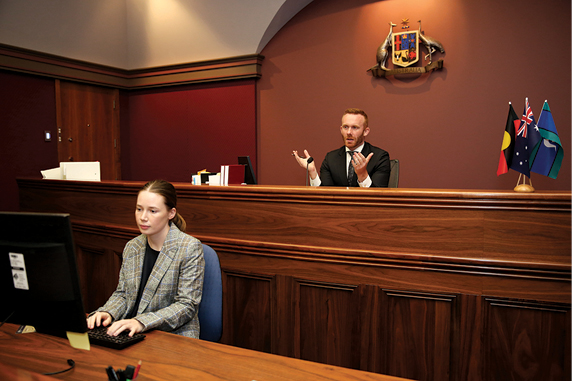
“It’s the best of both worlds [judges and lawyers],” says McGrath, who was a family lawyer in southwestern Sydney region at Marsdens Law Group for six years and is a Senior Associate at Gadens, currently on secondment to the Family Court.
Just as hospitals have been constructing COVID-19 wards and increasing the capacity of intensive care units, McGrath has been tasked with a mission to triage urgent family law matters that arise due to the pandemic. The major challenge is that everything has to be done remotely.
“Everything is conducted via [Microsoft] Teams or telephone,” explains McGrath. “We are still running conciliation conferences. Property settlements are proceeding. If people are filing by consent, that has become electronic. We have rolled out the digital court file within three weeks.”
McGrath explains that registrars, judges, associates and administrative staff have worked around the clock to implement new processes for conducting virtual hearings and mentions. At one stage early in the pandemic, 200 staff logged into a virtual training session on Microsoft Teams, instructed by Chief Justice of the Family Court William Alstergren.
“I would have expected changes like this to take 10 years – to do what we have achieved in the space of two weeks,” says McGrath. “It has really been a rallying effort from the executive and management of the court. In some respects, we are delivering justice faster than we would without the technology.”
Of course, there are hiccups; maybe a bandwidth issue or audio is not good, or a dog barks. But that in some respects brings an element of humanity that we are all in this together.
We ride the elevator to the fifth floor of Lionel Bowen and navigate to an empty court room. McGrath slips behind the bench and offers a pantomime of how he conducts virtual matters, beaming into a video call with the court’s media manager and me. His hands fly like an orchestra conductor as he addresses screens to his left and right. It’s the same as watching a registrar or judge hold court pre-COVID, just without the live audience.
“It doesn’t feel artificial. You’re in the zone and doing your job,” McGrath explains.
“Of course, there are hiccups; maybe a bandwidth issue or audio is not good, or a dog barks. But that in some respects brings an element of humanity that we are all in this together.”
While McGrath still attends the Sydney court complex in person – mostly because the internet connection is faster and there are some physical files that need reviewing – he has enjoyed the option to work from home on occasion. He still wears a suit and tie to court; even when “court” is his bedroom.
“I think it’s important when you work from home to make an effort to show that court is an important event and should be viewed with some gravitas,” he says.
On that note, McGrath admits that virtual courts have one major drawback: they lack the reverence that comes with fronting up to the grey brick building with its magnificently polished brass bannisters on Goulburn Street. Annual reports of the Family Court dating back five years show that more than 75 per cent of matters reach settlement at the first court hearing or conference because parties soon realise the expense and gravity of a long, drawn-out legal dispute.
“It’s that old adage of reaching a deal on the steps of the court before you go in,” McGrath says. “A lot of practitioners have commented that they miss that.
“I don’t think the court will become a call centre after the pandemic. But this rapid transition to remote work has demonstrated there are opportunities for us to tailor our responses, offering remote hearings where it might reduce travel expenses, or using technology to reduce intimidation for family violence situations.”

